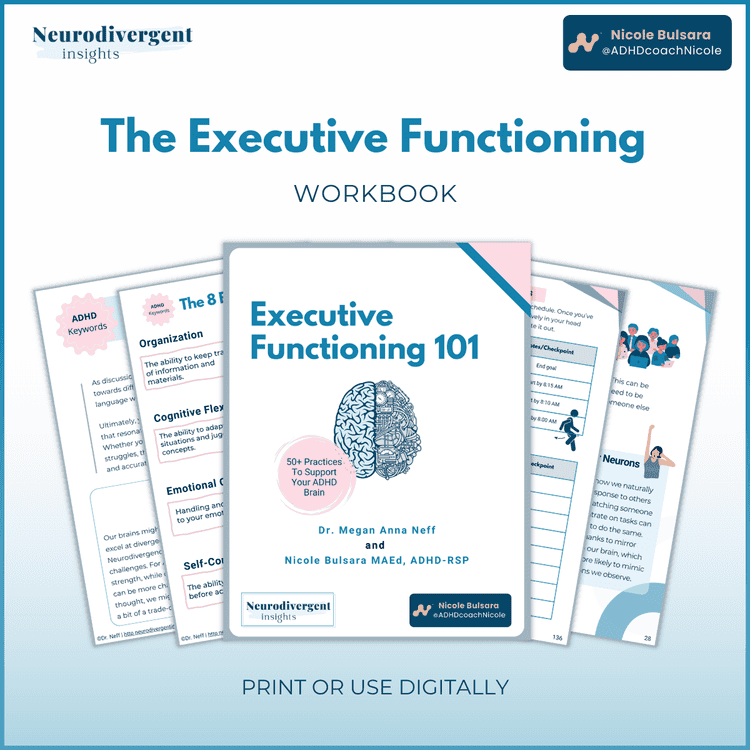
How to Improve Interoception: Tips for your Kids
If you’ve been around the Autistic/ADHD community a while, you have likely heard of the term interoception. You may also be wondering how to improve interoception in your body or your child’s body. If that’s a new term for you, here is a brief primer:
What is Interoception?
Interoception is our ability to be aware of our body’s signals and sensations (think thirst, hunger, the ability to experience your heartbeat, the urge to use the bathroom, and yes, emotions!). Interoception issues are often seen in the context of Autism and ADHD.
When it comes to interoception, a neurodivergent person may under-registration or over-registration body signals. Under-registration is more common and is characterized by reduced signals from the body. Over-registration is when the person experiences exaggerated signals from the body. In the latter case, they feel everything with intensity!
A third way interoception issues may show up is difficulty distinguishing body signals. In this case, the brain registers the appropriate amount, but the person cannot distinguish one signal from the other. Leaving them feeling disoriented in their body!
How Does it Show up in Parenting?

Interoception issues can impact many experiences: potty training, meltdowns, hydration issues, and so on. Potty training one of my kiddos was tough. If I could go back in time, it would have been so helpful to understand the underlying interoception issues at play! Your child may be experiencing interoception issues if they are struggling with:
Potty training
Child dehydration or poor feeding
Emotional meltdowns
Over or under-responding to pain
How to Improve Interoception?
Improving the mind-body connection is like a muscle and is strengthened with intentional practice and use. Here are five things that can improve interoception:
1) Feel your Heartbeat Challenge. Play a game with your child where you do jumping jacks, jump rope or any activity that gets the heart beating. Then pause to “catch the heartbeat.” Ask them to describe the sensation of their heartbeat. You can prompt them by asking questions such as: what color does it feel? Describe the sensation? Encourage sensation-based words like “buzzy,” “thump-thump,” or “whizzy” (they don’t have to be actual words!).
2) How Low Can you Go? This exercise comes from Kelly Mahler’s book on Interoception. This works well with older kids. If you have a smartwatch or finger pulse oximeter, this helps. Have them do an exercise that gets their heart beating and then create a challenge of “how low can you get your heart rate in 60 seconds”. If they are open to coaching, you can provide instruction on how slowing their breath will slow their heart. Encourage them to experiment with different strategies for slowing down their heartbeat. Record their heartbeat and have them try to beat it the following day. As they work on this, they will also be teaching themself self-regulation skills.
3) Mindful Body Scans. With mindful body scans, have them scan their body from toe to head, describing any sensations (squishy, tense, tight, soft). For younger kids, you can turn it into a game by pretending there is a lightsaber scanning their body from toes to head.
4) Ask Questions about their pain. Many Autistic and ADHD kiddos have “stomach pain.” Ask them to describe their pain when they come to you with pain. Is it throbbing? Sharp? Does it feel like rocks? And so on. As you develop language for their pain, invite them to consider if their pain might be hunger vs. worry vs. stomach ache. It takes time to distinguish between these sensations. Starting with small observations builds the foundations to be later able to distinguish these body signals.
5) If accessible to you, consider therapy-based interventions such as:
Working with an occupational therapist on sensory integration
The Safe and Sound Protocol (this improves vagal tone, which improves the connection between mind and body). (Sidenote, I am a safe and sound practitioner and plan to start a group for families sometime in 2022-2023. If you want to be added to my waitlist, shoot me an email at [email protected] to be added to my waitlist).

This post was proofread by Grammarly, my go-to for proofreading and catching all the details I naturally miss! Grammarly is entirely free to use. Click here to give it a try.







